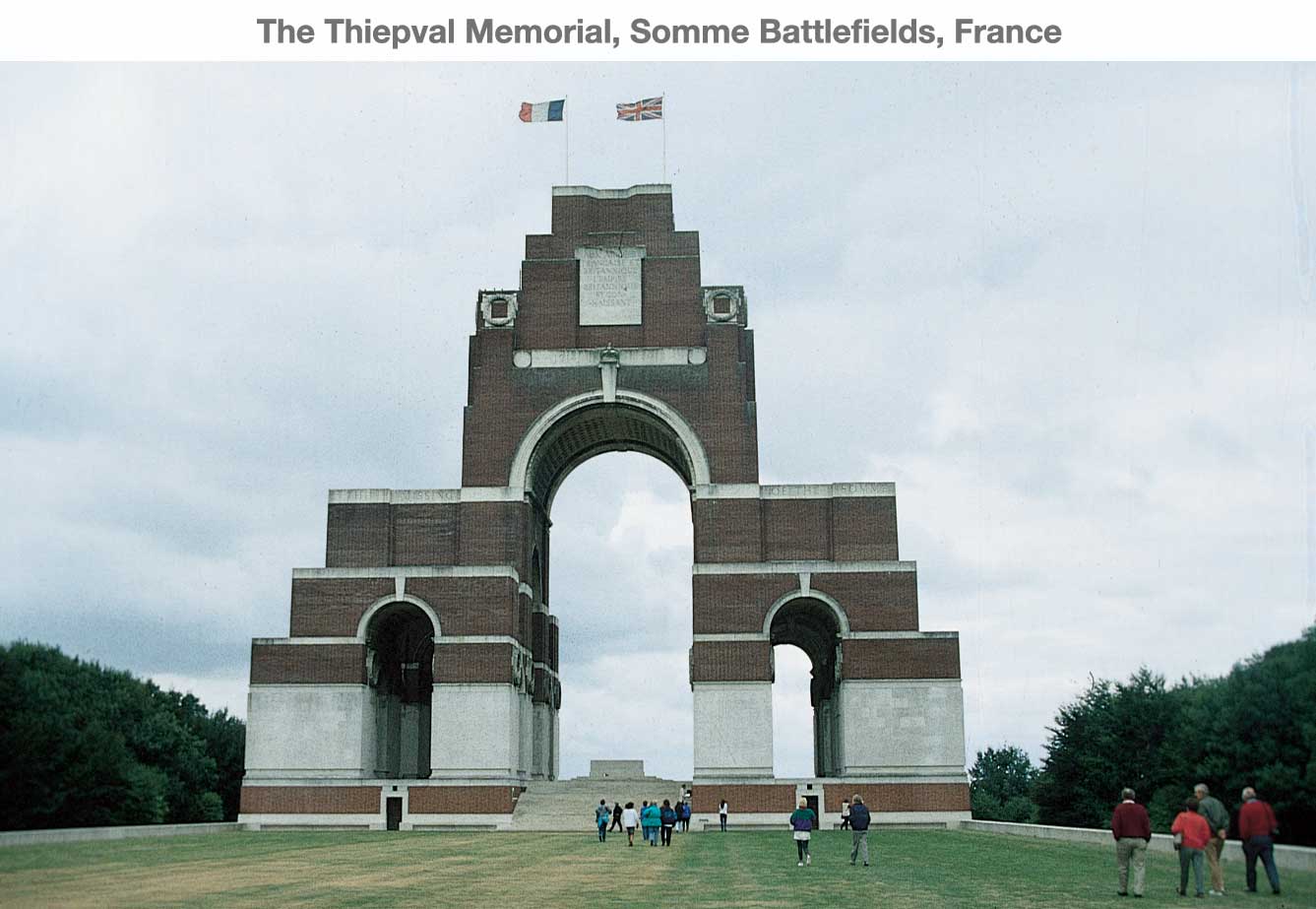World War I battle sites in France - 5 essential visits for schools
One hundred years ago the First World War was in its second year. The second battle of Ypres saw the first use of poison gas in the region by German troops and for the first time the British army used mines to disrupt German defences.
There are many projects and initiatives commemorating the centenary of the Great War, many of them aimed at school children.
A PGL trip to northern France gives schools the opportunity to visit some of the major battlefields and cemeteries of the First World War.
We select these sites for their educational value, since many have visitor centres with exhibitions or reconstructed features, such as trenches, which bring the learning experience to life.
Here are five visits you can be sure will provide a worthwhile and often moving experience for your students.


1. The Thiepval Memorial
Designed by Sir Edwin Lutyens, the Thiepval memorial is the largest British war memorial in the world. It commemorates the British and South African troops who died on the Somme but have no known graves. Some 72,000 names are listed on the stonework.
2. Etaples Military cemetery
In 1915 the British army built a large field hospital near the town of Etaples. By 1917 it was receiving over 40,000 sick and wounded soldiers every month. The site is now the largest Commonwealth war cemetery in France, with over 10,000 burials from the First World War.
3. The Lochnagar Crater
The Lochnagar Crater, situated south of the village of La Boisselle, was formed when 24 tons of explosives were detonated under German trenches on July 1, 1916. It was said at the time that the explosion was so loud that the Prime Minister, David Lloyd George, felt his desk vibrate ...in London! The crater is now a garden of remembrance.
4. Arras: Les Boves and Wellington Quarry
The town of Arras was destroyed in 1914, but beneath its streets, the chalk quarries, or boves, which date from the Middle Ages, played a crucial role in the battles to come.
In November 1916, the Allies expanded the caverns and tunnels so troops could be conveyed in secret to the front, creating an underground network which accommodated up to 24,000 soldiers and a medical centre with a fully equipped operating theatre.
Named by the New Zealanders who dug it, the Wellington Quarry has been designed as a remembrance site and museum. Above ground there is a memorial garden and memorial wall to the British soldiers who fought in the Battle of Arras.
The museum below tells the story of life underground for the soldiers and the build-up to the 1917 spring offensive. In a guided tour of the tunnels, students are supplied with hard hats resembling soldiers' helmets.
5. Vimy Ridge Memorial
Vimy Ridge, near Arras, is possibly the best place to get a real understanding of trench warfare and how it must have felt to be part of a battle. Near the information centre, trenches wind through the earth, still heavily pitted by shells, and the churned-up land has been preserved in places as it was during the conflict. Guided tours of the trenches are free.
Find out more about battlefield visits and PGL school trips to northern France.
Discover some unique historical photos from the front line on the Telegraph's website.
 MyPGL
MyPGL 0333 321 2100
0333 321 2100




